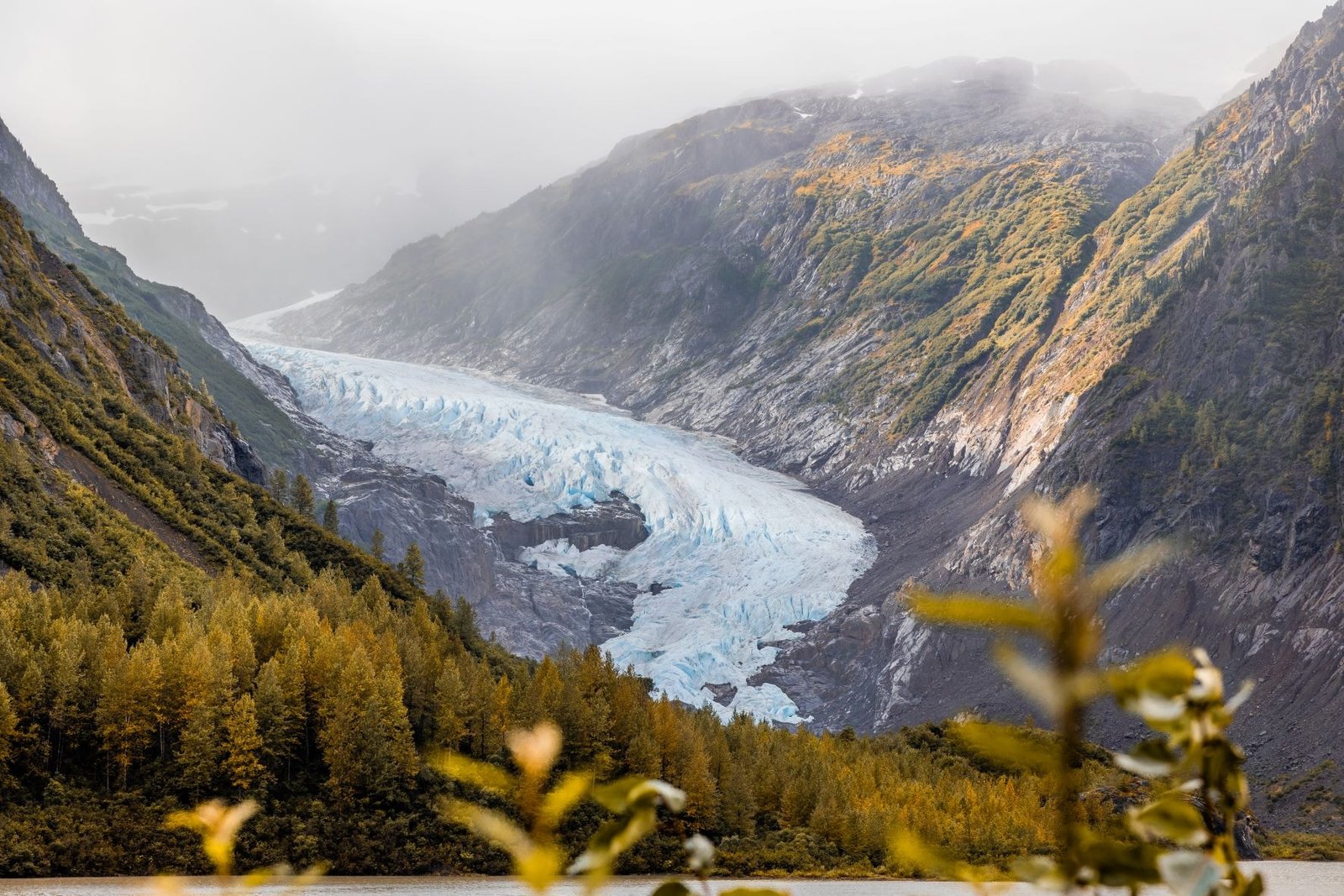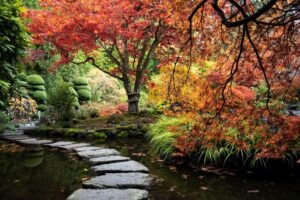Bear Glacier Provincial Park in British Columbia, Canada, is a must-visit for its stunning glacial views and vibrant ecosystem. This article will guide you through discovering Bear Glacier, how to get there, nearby attractions, and the best times to visit. Whether you’re seeking breathtaking landscapes or unique wildlife, Bear Glacier Provincial Park has something for everyone.
Key Takeaways
-
Bear Glacier Provincial Park is a protected area known for its majestic ice formations, unique ecosystems, and stunning scenery, comparable to a national park, having been designated a Class A Provincial Park in 1998.
-
The best time to visit Bear Glacier is from late June to mid-September, offering favorable weather and accessibility, while fall visitors enjoy fewer crowds and beautiful foliage.
-
Visitors can engage in various activities, including hiking, photography, and wildlife observation, while ensuring safety by traveling in groups and carrying bear spray.
Discovering Bear Glacier in Stewart, British Columbia

Bear Glacier is renowned for its majestic ice formations and vibrant blue hues, providing stunning scenic views that captivate and draw visitors from all over the world. This glacier is not just a static ice formation; it showcases dynamic movement with ice flows constantly shifting, creating unique and ever-changing landscapes over time. Bear Glacier’s retreat since the 1940s has steadily continued, creating Strohn Lake in the newly exposed basin.
Near Strohn Lake and Bear River Pass, Bear Glacier is part of a diverse ecosystem in the north with lush forests and abundant wildlife, making it ideal for nature enthusiasts. The glacier’s retreat since the 1940s has created Strohn Lake and offers unique opportunities to witness its dynamic nature. By the 1960s, Bear Glacier had receded significantly, and by 1967, Strohn Lake was no longer confined by the glacier.
A highlight of visiting Bear Glacier is the stunning view from designated points, where visitors can enjoy the glacier’s beauty and the lush surrounding forests. These vantage points are perfect for capturing the serene, awe-inspiring landscape in photographs, ensuring lasting memories of Bear Glacier.
In 1998, Bear Glacier was designated a Class A Provincial Park, highlighting its unique glacial environment and the need for protection. This designation underscores the importance of preserving natural wonders for both their aesthetic and ecological significance.
How to Get There
Getting to Bear Glacier Provincial Park is part of the adventure. The primary route, Highway 37A, offers scenic views, making the journey as enjoyable as the destination. As you drive through Bear River Pass, be prepared for steep grades and potentially challenging weather conditions, which add to the thrill of the journey. The drive is not only picturesque but also a testament to the rugged beauty of British Columbia’s landscapes.
Meziadin Junction is a key stop for essential services and information before heading towards Bear Glacier in Stewart, British Columbia. This junction ensures you’re well-prepared for the rest of your journey. From here, a short detour on Highway 37A will lead you to Bear Glacier, descending towards Strohn Lake.
While the day-use area is closed, visitors can still enjoy breathtaking views from a pull-out area along Highway 37A. This spot provides a safe place to park and take in the majestic glacier, making it convenient and accessible for all travelers.
Nearby Attractions
While Bear Glacier is undoubtedly the star attraction, the surrounding area offers several other must-see locations. Salmon Glacier, just 37 kilometers from Stewart, offers stunning views accessible via a scenic drive. The drive features numerous scenic spots, including waterfalls and wildlife viewing opportunities. The Salmon Glacier Scenic Viewpoint is well-equipped with facilities like picnic tables and vault toilets, ensuring a comfortable visit.
Strohn Lake, formed by Bear Glacier’s retreat, is another nearby attraction not to be missed. Situated along the route to Bear Glacier, this lake offers beautiful views and insight into the area’s geological history. The glacier once acted as a dam for Strohn Lake, preventing its drainage into Bear River Valley until significant water accumulated behind it.
For further exploration, the Portland Canal offers spectacular views, best experienced from the Sluice Box/Barneys Gulch Trail viewpoint. Meziadin Lake Provincial Park, about 30 kilometers east of Bear Glacier, offers great picnicking options and a chance to relax in nature.
History of Bear Glacier
Bear Glacier’s history is as captivating as its appearance. The glacier began its retreat in the 1940s, leading to the formation of Strohn Lake, which was temporarily held back by the glacier. This retreat significantly transformed Bear River Pass from an ice-filled expanse to a dynamic area with a new lake.
One dramatic aspect of this retreat was the elimination of hazardous floods in the Bear River Valley, known as “jokulhlaup.” These sudden, destructive floods occurred multiple times between 1958 and 1962 due to the melting glacier. The glacier’s continued retreat eventually reduced the risk of such floods, creating a safer environment for both the ecosystem and visitors.
Bear Glacier Park became a Class A Provincial Park in 1998, ensuring the protection and preservation of this unique glacial environment. This designation highlights Bear Glacier’s importance as both a natural wonder and a significant ecological and historical site.
Best Time to Visit
Timing your visit well can greatly enhance your experience at Bear Glacier. The best time to visit is from late June to mid-September, when the weather is most favorable and the park is fully accessible. During this period, you’ll enjoy the warmest temperatures and clearest views, ideal for outdoor activities and photography.
For a quieter experience, consider visiting in the fall, particularly from September through mid-October. The stunning fall foliage adds to the landscape’s beauty, and fewer tourists create a more peaceful environment.
Regardless of when you visit, regularly check the weather and prepare for significant temperature fluctuations by bringing extra layers of clothing.
Activities and Breathtaking Views at Bear Glacier
Bear Glacier offers a variety of activities to cater to different interests. Hiking trails offer chances to spot wildlife, including grizzly bears, in their natural habitat. For bear watching, the Fish Creek Wildlife Observation Site near Salmon Glacier is a must-visit, especially during the salmon run.
Photography enthusiasts will find Bear Glacier a paradise for capturing stunning landscapes and unique wildlife. Visitors often express awe, sharing their experiences through photos of the picturesque setting. Whether you’re a professional photographer or an amateur, the vistas here are sure to inspire.
Spring, particularly from May to mid-June, is ideal for biking, letting you experience the spring runoff in rivers and nature’s vibrant awakening. Winter offers opportunities for snow sports like snowshoeing and cross-country skiing, with the park being less crowded during this season. Always be cautious of bears by keeping a safe distance and carrying bear spray.
Summary
Bear Glacier Provincial Park offers a unique blend of stunning natural beauty, fascinating history, and a wide range of activities for visitors. Whether you’re hiking, photographing the landscape, or simply enjoying the serene views, Bear Glacier provides an unforgettable experience. Plan your visit, stay safe, and immerse yourself in the majesty of one of British Columbia’s most remarkable destinations.
Frequently Asked Questions
What is the best time to visit Bear Glacier?
The best time to visit Bear Glacier is from late June to mid-September, when the weather conditions are most favorable for exploration.
How can I get to Bear Glacier?
To reach Bear Glacier, you should take Highway 37A, with Meziadin Junction as a crucial connection point for your journey.
Are there any nearby attractions to visit?
Nearby attractions include Salmon Glacier, Strohn Lake, the Portland Canal, and Meziadin Lake Provincial Park, all of which offer stunning natural beauty and outdoor activities.
What lodging options are available near Bear Glacier?
Lodging options near Bear Glacier include accommodations in Stewart, BC, and nearby Hyder, Alaska, while camping choices are primarily found in these towns. Consider these locations for your stay to enjoy the area fully.
What safety tips should I follow when visiting Bear Glacier?
When visiting Bear Glacier, always hike in groups and carry bear spray to ensure your safety in wildlife encounters. It is also essential to remain calm if you see a bear and stay informed about road conditions.






